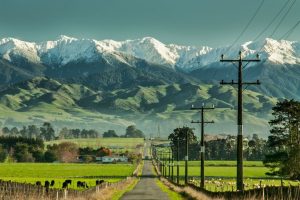By: Suzan Elzawahry
Journal of Global Rights and Organizations, Associate Articles Editor
WELLINGTON, New Zealand – On February 7th, 2024, the Supreme Court of New Zealand unanimously reversed a Court of Appeals decision that denied standing to a private citizen attempting to bring a tort action against New Zealand’s biggest carbon emitters. As a result, individuals in New Zealand now have standing to bring tort claims based on carbon emissions and potentially broader claims of man-made climate change. New Zealand may become the first common law jurisdiction to issue damages for a climate tort. If other jurisdictions follow suit, legal protections surrounding the right to life and freedom of belief may be significantly expanded.
 |
Plaintiff, Michael John Smith, is a Maori elder and the climate change spokesperson for his tribe. Initial pleadings stated that the release of greenhouse gas emissions by seven corporations in New Zealand (who made up one third of the country’s total greenhouse gas producers) risked adverse effects upon humankind and irreparable damage to the Maori’s customary and cultural interest in land. The claims were for negligence, tort of nuisance, and a novel claim of the tort of climate damage.
The Court of Appeals struck down all three claims, stating that they did not amount to a reasonably arguable cause of action. In American Jurisprudence, this is equivalent to granting summary judgement to the defendant for the plaintiff’s failure to state a claim.
The Supreme Court unanimously reversed this decision and reinstated Smith’s claim, reasoning that, procedurally, the Court is required to assume that the consequence of Defendant’s carbon emissions is Plaintiff’s harm and that it is the job of the trial court to hear further evidence.
Most notably, the Court paid particular attention to the fact that Mr. Smith’s claim is partially tikanga based. Tikanga is the principle of a genealogical and kinship-based connection to land, fresh water, and sea possessed by the Maori people. Mr. Smith alleges tikanga can form the basis of a tort because an injury to the land is also an injury to himself and his descendants; he argues that the respondent’s actions are the cause of injury to his cultural, spiritual, and nutritional connection to the environment. In their analysis, the Court accepted this argument and expressly recognized the importance of allowing tikanga to inform New Zealand’s body of common law. In recognizing the importance of tikanga and extending legal protections based on it, the Court took a major step towards protecting the freedom of belief.
Whether Mr. Smith will prevail in his tort claim is something only time will tell. However, the fact that a private citizen now has standing to sue major carbon emitters for tortious conduct is an astounding leap forward in expanding legal protection of the right to life. As carbon emissions continue to unfavorably impact global climates and human life, individuals may begin to find reprieve in their local courts.
For further information, please see:
Climate Case Chart – Smith v Fonterra – 12 Apr. 2024
NZSC – Smith v. Fonterra Co-Operative Group – 2024